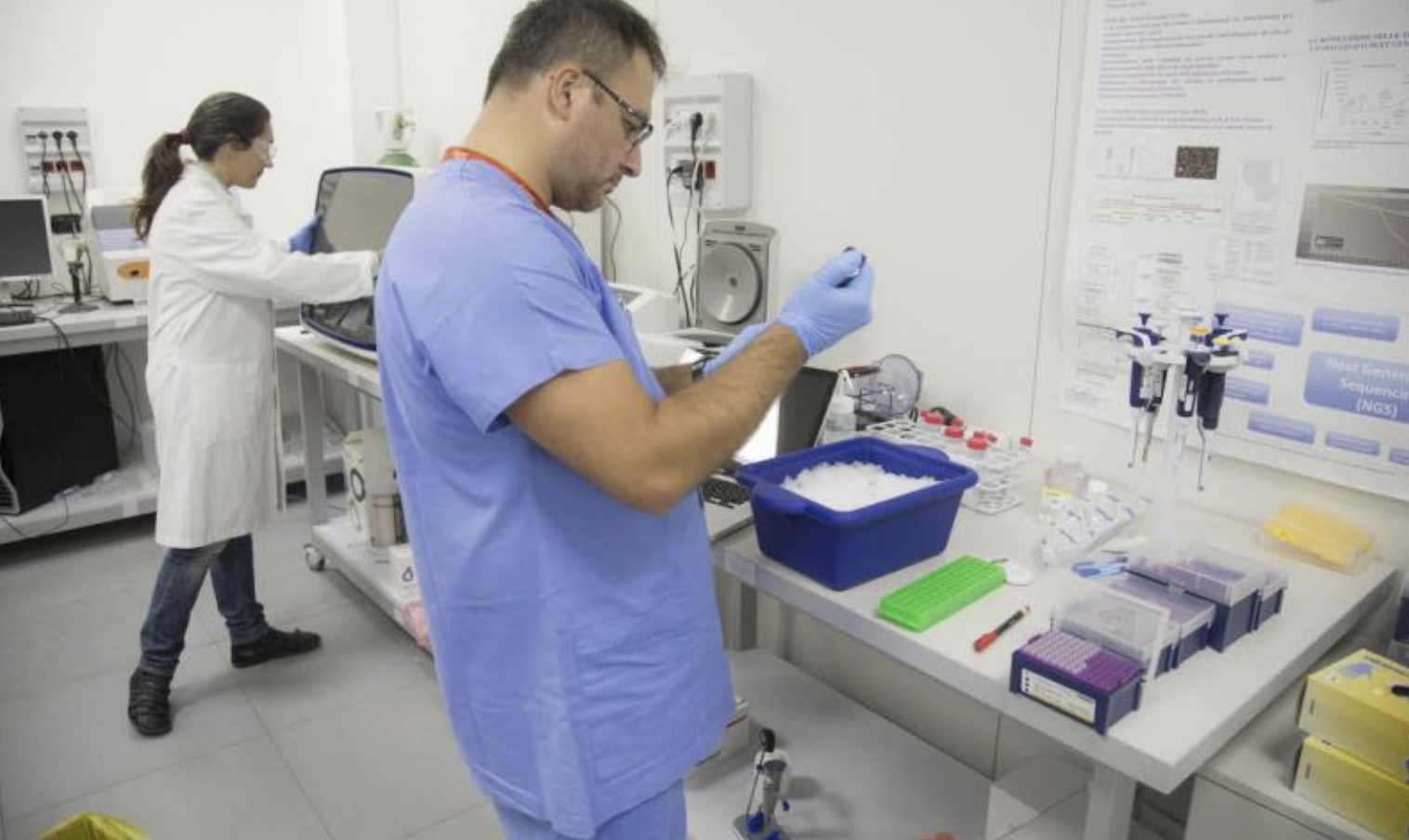
Next-generation sequencing may come with a few limitations, but its pros outweigh its cons.
Next-generation sequencing (NGS), also known as massively parallel sequencing or deep sequencing, has enabled major advances in clinical and translational research, transforming our understanding of biological systems across health and disease. The DNA sequencing technique has made it possible for clinicians and researchers to study the underlying DNA mechanisms associated with rare genetic disorders, neonatal and infectious diseases, and cancer. Such studies have been key to the development of personalized, better-targeted therapies.
That said, although NGS fuels developments both in the clinic and in research, it does have some weaknesses. Here, the life sciences journal BioTechniques delves into its advantages and disadvantages. First, though, BioTechniques explains the main stages of the NGS workflow.
Table of Contents
The Next-Generation Sequencing Workflow
Four main stages make up the next-generation sequencing workflow.
1. Sample preparation: The researcher or clinician extracts genomic DNA from samples such as saliva, blood, or tissue. They fragment the DNA into shorter sequences and follow this with ligation of adapters, amplification, and enrichment.
2. Library preparation: The researcher or clinician randomly fragments the DNA or cDNA, usually by enzymatic treatment or sonication. The platform they are using dictates the optimal fragment length.
3. Sequencing: The researcher or clinician selects a sequencing method based on the platform they are utilizing. Possible methods include reversible terminator sequencing, pyrosequencing, and sequencing by synthesis or ligation. Sequencing by synthesis is one of the most popular technologies because it allows researchers to sequence large amounts of DNA simultaneously and at high sensitivity. This way, they can detect a vast range of genetic alterations, like small insertions and deletions, structural variants, and single-nucleotide polymorphisms (SNPs).
4. Data analysis: The researcher or clinician uses bioinformatic tools or data analysis applications to identify pathogenic variants, align to reference sequences, and carry out quality control checks.
Next-Generation Sequencing’s Strengths and Limitations
Strengths
Before the advent of NGS, many researchers and clinicians performed first-generation sequencing (also known as Sanger sequencing). This technique has been prevalent for three decades and has laid the foundations for substantial advances in our understanding of the human genome. NGS has superseded this technique as it offers improved coverage and sensitivity, an efficient workflow, and is more cost-effective to implement. The cost of sequencing the human genome has dropped over the past 10 years, falling from $20-$25 million to under $1,000 by 2016.
On top of this, the time required to perform NGS and receive results has seen huge reductions over recent years. Today, NGS platforms can sequence millions of DNA fragments in parallel. As a result, researchers and clinicians can sequence virtually anything within a day, from specific target regions to the whole human genome. For example, it takes approximately 10 days to receive a whole-genome sequencing report from the day a laboratory receives a tumor specimen.
Whole-genome sequencing enables researchers to detect abnormalities across the whole genome, meaning they can sequence abnormalities across substitutions, insertions, deletions, duplications, chromosome inversions/translocations, and copy number changes (gene and exon). Plus, this sequencing technique can detect abnormalities across the whole genome using less DNA than the DNA needed for traditional sequencing methods.
Limitations
However, NGS doesn’t come without limitations. The technique provides information on several molecular aberrations, but the clinical significance for many of the identified abnormalities is currently unknown.
NGS also requires fast data processing, large data storage capabilities, and sophisticated bioinformatics systems, all of which can be expensive. Lots of institutions have the funding to purchase NGS equipment, but many don’t have the staff or computational resources to analyze and perform clinical interpretations of the data.
Also, although researchers can use NGS to sequence an individual’s whole DNA sequence, they can only use data from approximately 3% of the genome in clinical practice. Therefore, NGS has more potential in the research arena than in the clinical arena.
Next-Generation Sequencing Applications
Although NGS has a few limitations, the technique has proven essential to the development of scientific and medical research. Researchers can use NGS in an array of applications depending on the study area that they’re focusing on. These applications include:
· Targeted sequencing to examine specific genomic regions.
· Epigenomics to assess epigenetic modifications.
· Whole-genome sequencing to identify an organism’s complete DNA sequence.
· Whole-exome sequencing to analyze a genome’s coding regions.
· RNA sequencing to determine genetic alterations such as gene fusions and SNVs, perform transcriptome profiling of coding and non-coding regions, and identify genes in specific cell types.
· PCR for next-generation polymerases in the NGS workflow.
Recent developments have even seen NGS technologies advance therapies that tackle obesity and enhance COVID-19 testing. As NGS technologies continue to emerge and develop, we can expect to see sequencing techniques become even more cost-effective and accessible to genomics laboratories.
A Growing Resource for Science Research
First printed in 1983, BioTechniques was the first publication to review laboratory methodologies and techniques. Since then, the journal has grown its audience of scientists and research professionals who specialize in the life sciences, chemistry, physics, computer science, and plant and agricultural science. These professionals use the journal as a go-to resource to keep up with the latest in lab methods like NGS, CRISPR gene editing, western blotting, polymerase chain reaction, and chromatography. Journal aside, users also access BioTechniques’ multimedia website, where they can engage in community discussions, read articles and eBooks, listen to podcasts, and watch videos and webinars.
BioTechniques is one of Future Science Group’s 34 journals. The progressive scientific and medical publisher is home to peer-reviewed, open-access journals like Nanomedicine, Regenerative Medicine, and Future Oncology. Future Science Group has published over 50,000 articles to date and receives over 5 million article downloads every year.